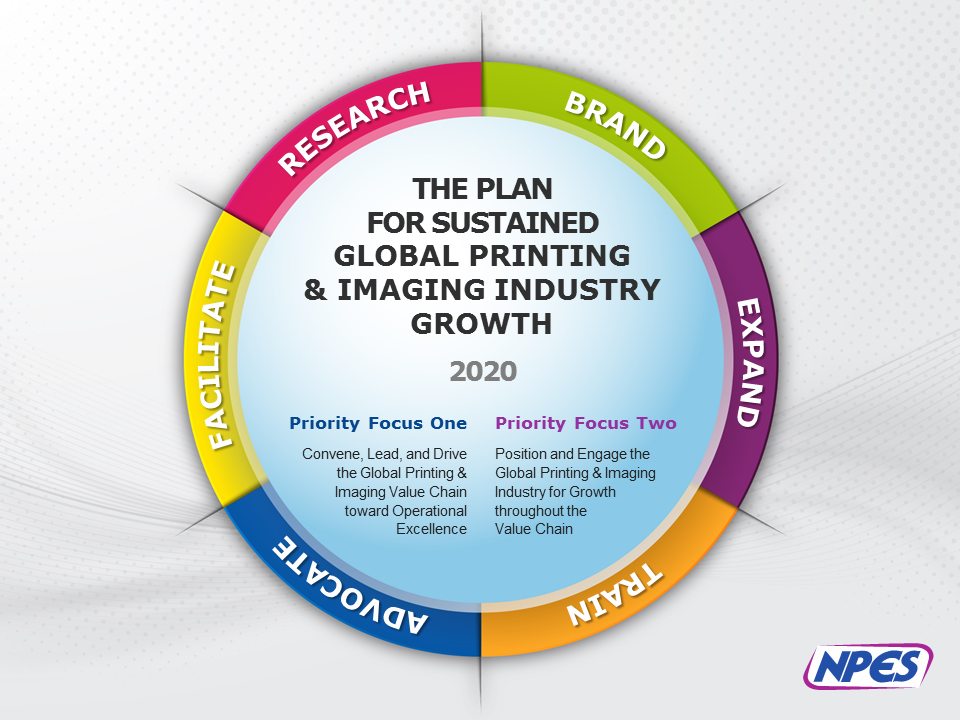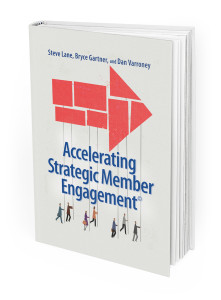
The 2017 PWC 20th annual CEO Survey, fourth quarter domestic GDP numbers and the 2017 Conference Board Global forecast of 2.3% economic growth show just how challenging business conditions are for today’s business decision makers. Organizations can help their members convert these challenges into growth opportunities by utilizing 4 Association Disruption Strategies. In doing so you, can position your organization as disruptive growth agents for the Industry or the Profession you serve.
Disrupt Ourselves
Embracing the hyper competitive environment is essential in a time of global uncertainty and disruption for all Association and Professional Society Leaders. “We have to disrupt ourselves every day,” notes Thayer Long, President of Reston, Virginia based NPES. He points to how his Association is answering the call and positioning itself to be a growth agent for the printing and imaging industry. In a recently completed Strategic Plan update, he reflects on how NPES with Board and Market guidance is addressing challenges and competitive threats for the Industry and the Association.
Transforming into agents of change and growth helps keep your organization more relevant. In today’s environment, members demand real time solutions that advance their concerns and achieve results. By adding these 4 Association Disruption Strategies into your planning process, your organization becomes an important part of everyday conversations.
4 Association Disruption Strategies
- Obtain Actionable Data – Understanding challenges and opportunities for the Profession or Industry you represent is a must. Utilizing an impact and member engagement focused survey can help you obtain more realistic assessments of how relevant and connected your organization is to the outcomes that members seek to achieve. Taking your members pulse annually through impact and memebr engagement surveys will especially help keep your organization aligned with your members and their customers.
2. Position the Association as an Outcome Driver – Changing the conversation from “here’s what you get for your money” to “here’s the power of engaging with others in your Industry/Profession to create new, innovative solutions” positions your organization as a thought leader and a solution provider.
3. Deliver Products to Drive Impact – Avoiding the “all you can eat buffet” environment that adds more products dilutes value and dampens staff enthusiasm over time. This posture also causes your members to perceive your Association or Professional Society as less relevant. For example, a data based approach that utilizes survey results from members and their customers can validate what your members need to achieve their business outcomes. Using this approach NPES was able to affirm the need to deliver actionable Industry Research for Global Print Manufacturers, Printers, and the Big Brand Companies.
4. Keep Strategic Plans Nimble – As business cycles shift, your organization must be able to adapt and remain relevant. For instance, it’s not yet clear on what the Post Brexit environment will look like nor is it clear how health care policy will evolve. Collaborating with your board to build and adjust an organization Business Plan instead of the traditional Strategic Plan helps you respond instantaneously to market changes.
Applying these 4 Association Disruption Strategies to develop your new Business Plan can help your Association or Professional Society accelerate its relevance and motivate higher levels of Member and Industry engagement. By doing so, your organization becomes the focal point for the Profession or Industry you represent. For NPES, extensive survey research and strategic deliberations with their board positions the organization as the focal point for the global imaging and printing industry growth.

4 Association Disruption Strategies
The Merriam Webster definition of disrupt helps to frame the decision point for you as an Association Executive or an Executive Director:
- “to cause (something) to be unable to continue in the normal way: to interrupt the normal progress or activity of (something)”
In today’s uncertain and anemic growth environment, should Associations and Professional Societies utilize their Business Planning (formerly known as Strategic Planning) process to “disrupt themselves?” Is there any other choice?
Free eBook “Accelerating Strategic Member Engagement” is available upon request for all Association Executives at Potomac Core – Association Consulting











